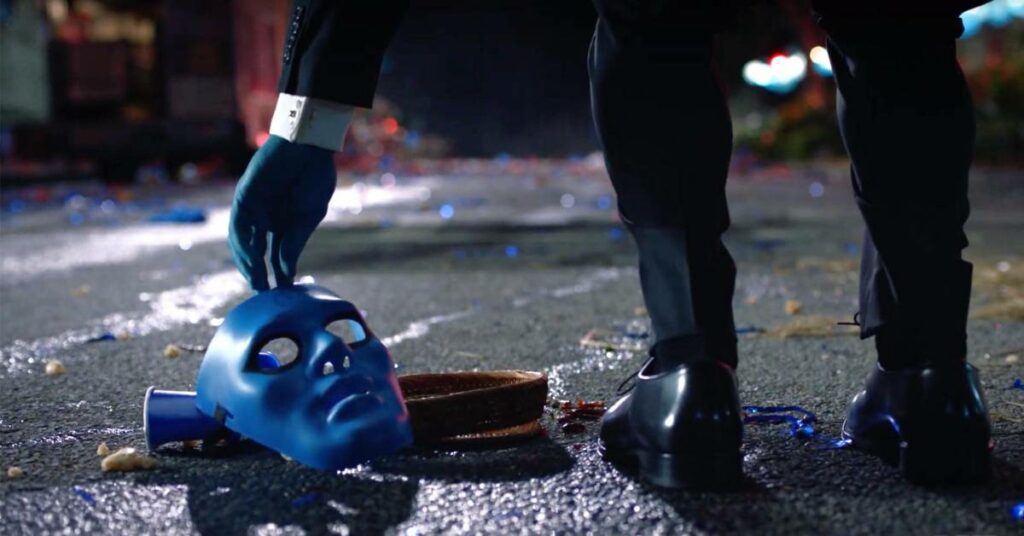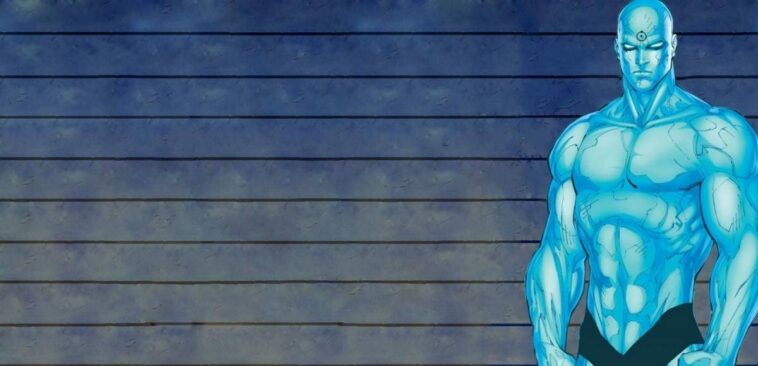Perhaps the only thing that’s worse for mankind than an evil Superman is an apathetic one. We’ve seen many dark versions over the years, from Nuclear Man in Superman 4 all the way up to this year’s Brightburn but Dr. Manhattan is one of the few that just doesn’t seem to care about humanity. This indifference could be more detrimental, as a villain usually has at the very least, a motive. As if Watchmen wasn’t layered and complex enough with its three alternative takes on Batman (one of which turns out to be genocidal), a world where Nixon gets re-elected for five terms and there’s a constant threat of nuclear war with the Soviets; we also have a disillusioned Superman to deal with.
For this profile, I’ll be drawing on all available interpretations of the character which includes the Watchmen film, original Watchmen graphic novel (obviously) and the Before Watchmen prequel graphic novels (they’re canon, whether Alan Moore likes it or not…which we know he doesn’t). Dr. M also has an important role in DC’s Rebirth event in the Batman/Flash graphic novel The Button, which is a build-up to another story Doomsday Clock.
The latter is mid-run and won’t conclude until the end of the year. For this reason, I won’t be drawing on these narratives, even though they are canon as well. The only thing I will say is that so far, it seems Dr. M has been developed into a very different character. This is another reason not to include this interpretation here as it may muddy the perception of him established so far and this new version of him may not go any further than in this run of comics.
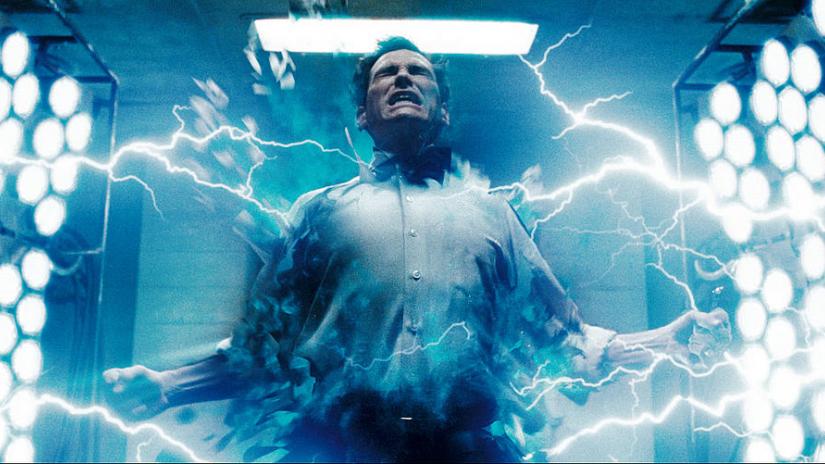
Dr. M wasn’t always a demigod. He started life as Dr. Jon Osterman, a nuclear physicist who was accidentally locked in an Intrinsic Field Generator, where his body was disintegrated. Somehow, during the incident, it seems that the generator’s ability to deconstruct material on a subatomic level was transferred to him and this granted him a whole range of superpowers. These include (deep breath) invulnerability, super strength, telekinesis, flight, phasing, force fields and teleportation. He can use his omnikinetic powers to disintegrate, reconstruct, transmute and create any kind of matter, even living creatures including multiple, independent versions of himself. Dr. M is able to change his size to that of a giant, requires no sustenance of any kind to live, requires no sleep and is therefore immortal. He can also see his own timeline in a nonlinear structure, which means he can see his past, present and future simultaneously.
I used to think that Supes was overpowered but Dr. M takes things to a whole new level. His origin is told in a nonlinear way to reflect his own viewpoint, and in the film, Philip Glass’s “Prophecies” from his Koyaanisqatsi soundtrack album accompanies the sequence and I think it’s one of the best marriages of visuals and music I’ve ever seen. In essence, he becomes a fourth-dimensional being who is capable of pretty much anything he can imagine.
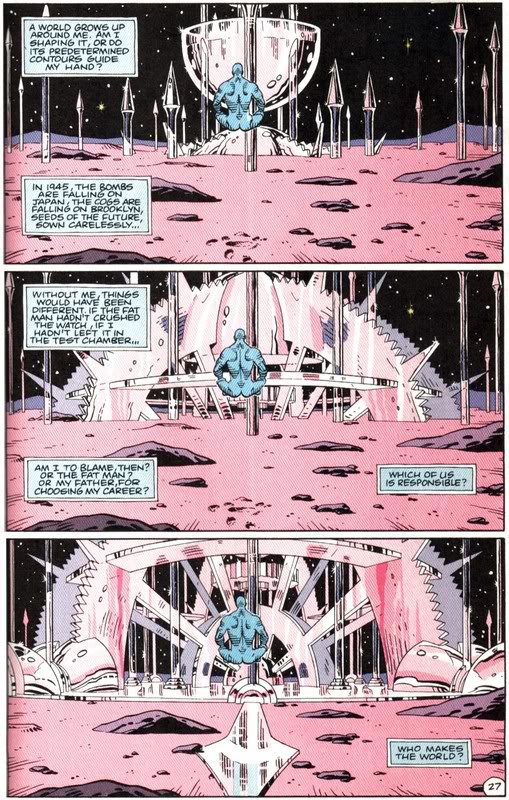
I know what you may be thinking and yes, it is very strange that he exists in a universe where no one else has any superpowers of any kind. When I first read the Watchmen graphic novel, I wasn’t aware that anyone in the story had powers, so this came as a big surprise to me. At first, I wasn’t sure how to feel about it but over time I’ve realised that it’s actually a stroke of genius. By including this character, Alan Moore grants himself the ability to explore both ends of the superhero spectrum; the plight of your Batman archetype who has no powers in the real world and then the trials of a Superman archetype who is even more godlike. This adds range and a whole other layer to the narrative.
By making him so powerful, his character takes on a more philosophical role. The question of what superheroes should be allowed to do from a political perspective is a well trodden-path—it has been explored recently by both DC in Batman v Superman and Marvel in Civil War. However, what Dr. M wrestles with is not to what extent he should try to help humanity but what he should do with reality itself. He started his career as a superhero by quickly being snapped up by the government and being branded with his code name that links him to the Manhattan Project. Even at this early stage he said to himself that they were “shaping me into something gaudy and lethal,” the government’s classic first move of weaponising whatever they’re able to.
Nixon went on to personally ask him to intervene in the Vietnam War; he does and single-handedly ends it. Another great scene depicted in the film sees a giant Dr. M disintegrating Viet Cong soldiers with helicopters accompanying him, all to the backdrop of Richard Wagner’s “Ride of the Valkyries.” This is a great tribute to the infamous helicopter scene from Apocalypse Now and serves as a parallel to show how much his existence changes history. The Viet Cong agree to give up if they can surrender to him personally and when they do, they bow down to him as if in worship.
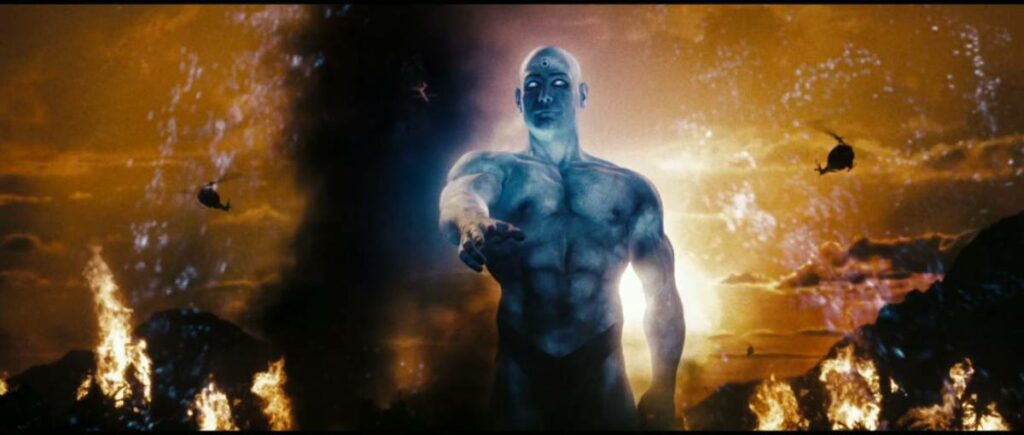
Dr. M seems to be one of the only members of the Watchmen team that actually benefits from the Keene Act, the bill that Nixon passed banning all types of vigilantism. He is constantly evolving and by the time we see him in the events of the Watchmen graphic novel, he seems to have outgrown being a hero in the traditional sense. This is reflected in the attire he chooses. During his branding by the government, he wears a black, full bodysuit. When he joins the Watchmen, this has changed to a black leotard. Whilst in Vietnam, he has taken to wearing just a black thong. Finally, by the time we see him in retirement, he wears nothing at all.
At this point we find that he’s turned his attention to more global efforts, like trying to solve the energy crisis using technology. In the film this is with the help of Ozymandias but he’s unaware of his partner’s ulterior motives. In this reality, Dr. M has impacted the world so much that he he’s advanced technology a significant amount as well. It’s the reason that zeppelins patrol the sky (a motif borrowed by Batman: The Animated Series) and also the reason that Nite Owl has an airborne vehicle with a myriad of weapons and gadgets. He’s rich and a genius but it seems unlikely these resources would enable him to build a vehicle that can fly in any direction without wings in this period, not without the leap in technology that Dr. M facilitates.
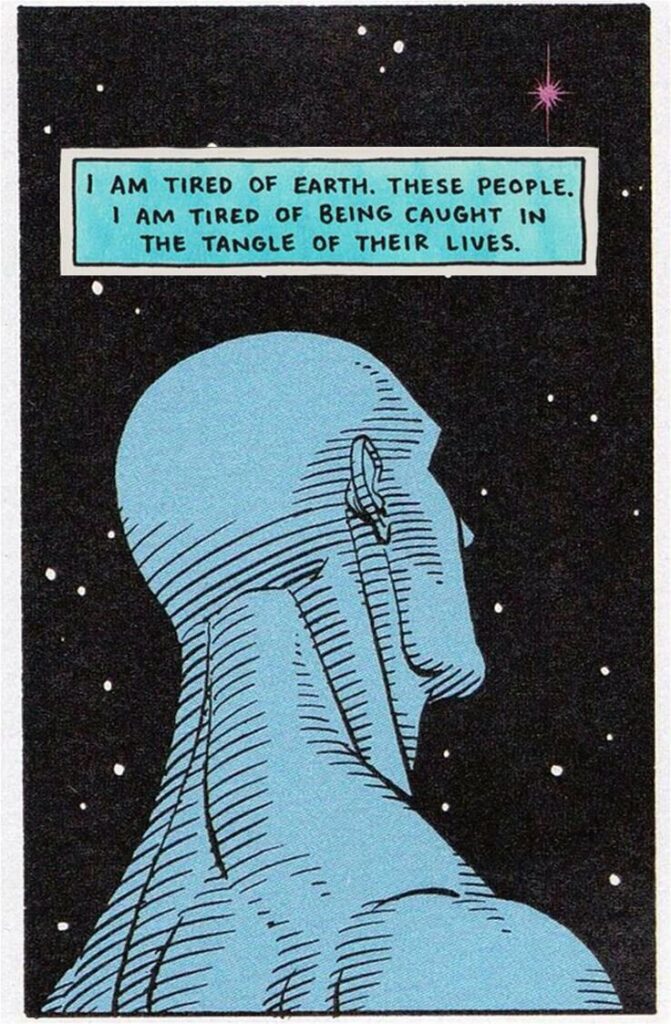
Although it may not look like it, he does still feel emotions, despite how much he drifts away from mankind and human interaction altogether. Ozymandias says that he’s studied his limited facial twitches and surmises that he still feels deep emotions but hardly shows them. This is why he’s able to manipulate Dr. M into leaving Earth, after Silk Spectre 2 breaks up with him and he sets him up to make it look like he gave his ex and a former colleague/friend cancer. It’s also SS2 who finally convinces him to return to Earth, after Dr. M helps her realise that the Comedian is her father. This revelation reminds him of the beauty of humanity, that someone he loves could be born from such a tumultuous relationship. This is a deeply touching moment, especially in the film.
In his Before Watchmen story, we get an expansive, intricate look at how Dr. M perceives his reality. This includes the aforementioned nonlinear view of time but also suggests that he can actually see different dimensions as well. The narrative cleverly uses the thought experiment of Schrödinger’s cat as an illustration for the quantum mechanics of how he views these. It could be that he’s just imagining the alternate realities of what would have happened if he had made different decisions but his use in the The Button and Doomsday Clock confirms that he can indeed travel between dimensions and alter different realities.
From what I’ve heard, the new Watchmen TV series will be a sequel to the original graphic novel as opposed to the film. Both are very similar, as the film is almost a panel-for-panel translation with one of the only major differences being at the climax of the story. In the graphic novel, Ozymandias uses a machine that Dr. M’s power inspired him to create to teleport and deposit a gigantic, alien-looking, brainy, squid monster into the middle of New York City. The teleportation machine isn’t perfected and so causes the monster to explode on arrival and was also designed to send out a massive psychic shockwave, killing thousands more. This is to trick the world into thinking that this is the start of an alien attack and to unite enemy nations to deal with this common enemy.
In the film, Dr. M helped him create the machine so he could replicate some of his power. Ozy then used said machine to set off multiple explosions in major cities across the world to make it look like Dr. M was responsible. Again, uniting hostile countries against a shared threat. I actually prefer the film’s ending out of the two as it makes more sense and has been increased in scale to keep up with the times. The graphic novel’s ending works fine within a comic book universe but would be hard to translate to live-action. I would like to see the new series attempt it though, as we didn’t get to see it in the film. The most important difference between the two endings though, is how Dr. M is viewed by the world.
In the film he’s seen as a vengeful god that has struck and is still keeping a watchful eye on humanity in case it flirts with nuclear war again. In the comics he’s not associated with the attack and should therefore be still seen as a hero, just one who has distanced himself from humanity by living on Mars. He will most probably play a pivotal role in the new TV series; it would be very odd if he didn’t. We’ve seen footage of him in the trailer on Mars and being celebrated with what looks like his own parade with blue masks. The clincher right at the end of the trailer is seeing his own blue hand picking up one of these discarded masks. An older Ozymandias also drops a big clue by quoting Dr. M’s last words in the graphic novel: “Nothing ever ends.”
